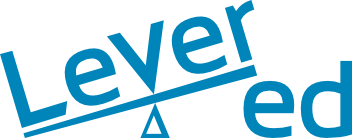
Our instructional system supports teachers in creating student-centered learning for a wide-range of diverse students. A foundation of student-centered learning is positive relationships between teacher-and-students are related to the healthy development of children for academic achievement and positive social-emotional adjustment. Teachers are supported via three causal pathways that lead to student-centered learning.
Dashboards and other tools that help teachers to decide on interventions and enrichment opportunities.
Suggesting options and allowing professional judgment on the timing of assessments.
Supporting classroom management with live alerts about student requests for help, struggles, progress, and the ability to selectively reset student activities.
Our instructional system enables appropriate levels of challenge and support for a wide-range of students. U.S. teachers have students with diverse needs, prior knowledge, and language skill and yet they have less planning and prep time than other developed nations. Underserved populations (including ELLs) are less likely to be identified as gifted and talented and so enrichment opportunities need to be embedded in the curriculum. Students receive appropriate challenge and support via six causal pathways.
Our competency-based Common Core curriculum includes another foundation of student-centered learning, requiring mastery before progressing. Intervention and enrichment lessons offer students their level of support or challenge.
Individualized curriculum is combined with small-group mathematical activities that are role-based and structured, and daily whole-class discussions about problems that students find difficult.
Students are engaged with using realistic mathematics problem contexts, visual models, and interactive teaching processes.
Instructional activities and formative assessments intentionally engage students in the eight mathematical practices.
Multilingual learners are supported through Specially Designed Academic Instruction in English (SDAIE) strategies using multiple methods to convey domain-specific language, provide direct instruction for foundational concepts, and embed feedback within lessons. In addition, Guided Language Acquisition Design (GLAD®) approaches embed math vocabulary glossary with animations, audio and text at the start of each lesson and are available with 1-click.
Structuring group learning activities and peer-mentoring develop students’ social-emotional learning as a complement to their mathematics learning and executive function improvements.
As a certified evidence-based intervention for mathematics, Levered Learning is among the industry leaders able to empower schools and districts to improve student outcomes. LearnPlatform found Levered, "has a well-defined logic model, based on research”.
Click on Levered's ESSA certification badge below to download the report.
Digital Promise is a nonprofit organization that builds powerful networks and takes on grand challenges by working at the intersection of researchers, entrepreneurs, and educators. Their vision is that all people, at every stage of their lives, have access to learning experiences that help them acquire the knowledge and skills they need to thrive and continuously learn in an ever-changing world. For more information, visit the Digital Promise website.

Digital Promise found all of the teachers in the pilot believed Levered saved them time in planning and preparation and made it easier to meet individual student needs.
Overall growth in math on the California Smarter Balanced Assessment from 3rd to 4th grade was 170% of the state average growth.

The design of our instructional system is based on multiple strands of educational theory and research combined with our founder’s two decades of classroom experience.
Download our research-based model with citations

An independent review from LearnPlatform has verified that Levered Math for elementary students met all indicators related to ESSA's Level IV "Demonstrates a Rationale".

This pilot brief from Digital Promise looks at the impact of Levered's 4th-grade curriculum on two schools in the same district with different demographics, but similar gains for students on the state test.
100% of teachers: